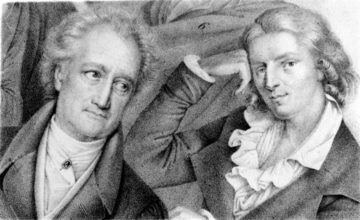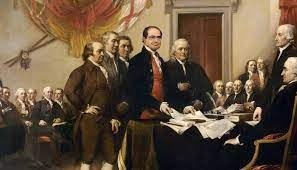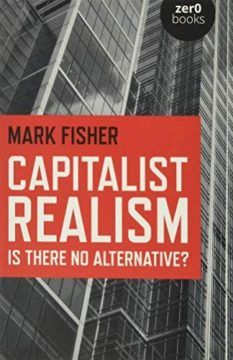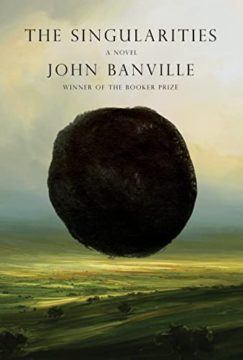Category: Recommended Reading
Gal Costa (1945 – 2022) Brazilian Singer
Lee Bontecou (1931 – 2022) Sculptor
How Goethe and Schiller ushered in the romantic age
Freya Johnston in Prospect Magazine:
 Andrea Wulf’s substantial yet pacey new book concerns itself with a dazzling generation of German philosophers, scientists and poets who between the late 18th and early 19th centuries gathered in the provincial town of Jena and produced some of the most memorable works of European romanticism.
Andrea Wulf’s substantial yet pacey new book concerns itself with a dazzling generation of German philosophers, scientists and poets who between the late 18th and early 19th centuries gathered in the provincial town of Jena and produced some of the most memorable works of European romanticism.
Perhaps the most wonderful account of this group’s intellectual and emotional life published in English is Penelope Fitzgerald’s 1995 historical novel The Blue Flower. For that book’s epigraph, Fitzgerald chose a comment made by Friedrich von Hardenberg, the man later known as Novalis: “Novels arise out of the shortcomings of history.” This fragmentary thought is both allusive and cryptic. We might take it to mean that novels pick up where history leaves off; that fiction comes into being in order to chart the private, intimate, domestic aspects of life rather than the large-scale, public sweep of grand events that governs a conventional historical narrative. Novels implicitly challenge the priorities of history, inviting us to look within and to reconceive the world. Novalis, himself a wildly experimental writer of fiction and a poetic thinker of terrific originality and insight, argued strenuously for the need to romanticise and revolutionise our surroundings according to what we find inside ourselves: philosophy, he said, originates in feeling.
Fitzgerald’s response as a novelist to that call—to recognise the primacy of individual sensations—was to write in such an unobtrusively informed and tactful way as to convince us that she personally knew the characters about whom she was writing. Conveying her sense of the past through beautifully assured, delicately economical glimpses of the Hardenbergs and their circle at home in the 1790s, her style is as clipped and fragmentary as that of her philosophical subject, intimating via imaginary reconstructions a world of familiarity with private love, pain and grief.
More here.
Sunday Poem
Eurydice
I am not afraid as I descend,
. . . step by step, leaving behind the salt wind
. . . . . .blowing up the corrugated river,
the damp city streets, the sodium glare
. . . of rush-hour headlights pitted with pearls of rain;
. . . . . .for my eyes still reflect the half-remembered moon.
Already your face recedes beneath the station clock,
. . . a damp smudge among the shadows
. . . . . .mirrored in the train’s wet glass.
Will you forget me? Steel tracks lead you out
. . . past cranes and crematoria,
. . . . . .boat yards and bike sheds, ruby shards
of Roman glass and wolf-bone mummified in mud,
. . . the rows of curtained windows like eyelids heavy
. . . . . .with sleep, to the city’s green edge.
Now I stop my ears with wax, hold fast
. . . the memory of the song you once whispered in my ear.
. . . . . .Its echoes tangle like briars in my thick hair.
You turned to look . . .
. . . Seconds fly past like birds.
. . . . . .My hands grow cold. I am ice and cloud.
This path unravels.
. . . Deep in hidden rooms filled with dust
. . . . . .and sour-night breath the lost city is sleeping.
Above, the hurt sky is weeping,
. . . soaked nightingales have ceased to sing.
. . . . . .Dusk has come too early. I am drowning in blue.
I dream of a green garden
. . . where the sun feathers my face
. . . . . .like your once eager kiss.
Soon, soon I will climb
. . . from this blackened earth
. . . . . .into the diffident light.
by Sue Hubbard
from Artlyst Magazine
How Did America End Up With the Z.O.M.B.I.E. Act?
Matteo Wong in The Atlantic:
 Judging by the titles of bills they propose, members of Congress occupy a space between used-car salesperson and poet. Over the past two years, lawmakers in the 117th Congress have introduced the DAYLIGHT Act (Daylight All Year Leads to Ideal Gains in Happiness and Temperament), the ZOMBIE Act (Zeroing Out Money for Buying Influence after Elections), the CROOK Act (Countering Russian and Other Overseas Kleptocracy), and the GIVE MILK Act (Giving Increased Variety to Ensure Milk Into the Lives of Kids). Some acronym names are so long that I can summarize the bill’s message in fewer letters: the CONFUCIUS Act (anti-China), the SPECIAL RELATIONSHIP Act (pro-U.K.), the CONSCIENCE Act (anti-vax).
Judging by the titles of bills they propose, members of Congress occupy a space between used-car salesperson and poet. Over the past two years, lawmakers in the 117th Congress have introduced the DAYLIGHT Act (Daylight All Year Leads to Ideal Gains in Happiness and Temperament), the ZOMBIE Act (Zeroing Out Money for Buying Influence after Elections), the CROOK Act (Countering Russian and Other Overseas Kleptocracy), and the GIVE MILK Act (Giving Increased Variety to Ensure Milk Into the Lives of Kids). Some acronym names are so long that I can summarize the bill’s message in fewer letters: the CONFUCIUS Act (anti-China), the SPECIAL RELATIONSHIP Act (pro-U.K.), the CONSCIENCE Act (anti-vax).
These reverse-engineered acronyms, or “backronyms,” are inescapable on Capitol Hill. Two of the biggest laws of the past few years were the CARES Act, for pandemic relief, and the CHIPS for America Act, for semiconductor manufacturing. Since early 2021, members of Congress have introduced two separate AMIGOS Acts, two PROTECT Florida Acts, and four SHIELD Acts. These naming devices can seem silly and contrived, especially when compared with the general soberness of Washington policy making. Yet congressional backronyms have been on the rise for years: I wrote a computer program to check legislation titles for acronyms that spell out complete words, and found that roughly 10 percent of bills and resolutions introduced over the past two years have had backronym names—up from about one in 20 a decade ago and less than 1 percent in the late 1990s. The proportion has risen with every Congress since at least 2001.
If that trend holds, the next Congress, elected this week, will be the most backronym heavy yet. So how did the acronym come to infiltrate American politics?
More here.
Saturday, November 12, 2022
Paradoxes of Liberty – Amartya Sen (1981)
How the Victorians Took Us to the Moon
Katy Guest at The Guardian:
 As he unveiled Tesla’s new humanoid robot, Optimus, this September, Elon Musk spoke with characteristic flamboyance about the device’s potential. “This means a future of abundance,” he declared. “A future where there is no poverty … It really is a fundamental transformation of civilisation as we know it.” Perhaps deliberately, he was echoing the tone of his company’s namesake, Nikola Tesla, who in the 1890s was making similarly bold claims about his own work-in-progress. With his new system of wireless telegraphy, Tesla insisted, battleships would be controlled remotely, meaning that pretty soon “war would be abolished” and there would be a “revolution in the politics of the whole world”.
As he unveiled Tesla’s new humanoid robot, Optimus, this September, Elon Musk spoke with characteristic flamboyance about the device’s potential. “This means a future of abundance,” he declared. “A future where there is no poverty … It really is a fundamental transformation of civilisation as we know it.” Perhaps deliberately, he was echoing the tone of his company’s namesake, Nikola Tesla, who in the 1890s was making similarly bold claims about his own work-in-progress. With his new system of wireless telegraphy, Tesla insisted, battleships would be controlled remotely, meaning that pretty soon “war would be abolished” and there would be a “revolution in the politics of the whole world”.
How the Victorians Took Us to the Moon argues that this triumphalist view of the future, so much the norm among Tesla’s contemporaries, led directly to the advances that enabled the moon landings, the technological present we now inhabit and the way we still think about the future today.
more here.
What Next For Detroit?
Thomas J. Sugrue at Public Books:
 Vergara’s newest book, Detroit Is No Dry Bones, powerfully documents the transformation of Detroit over the last several decades, offering an unflinching portrayal of a city gutted by decades of anti-urban public policies, intense racial segregation, and heartlessly mobile capital. Vergara’s approach is a reminder of the power of looking at small things—a fence, a broken window, a graffiti-strewn brick wall, a lawn ornament—to illustrate what might otherwise be impersonal processes and grand social forces. But Vergara’s keen eye also sees what cannot simply be reduced to urban decay. A raggedy lot becomes a lush garden, a blank wall becomes a canvas for an unknown artist, a pile of tires and a piece of wood become an impromptu bench at a bus stop. Vergara’s Detroit is not simply an acropolis, it is a place of rebirth and reinvention.
Vergara’s newest book, Detroit Is No Dry Bones, powerfully documents the transformation of Detroit over the last several decades, offering an unflinching portrayal of a city gutted by decades of anti-urban public policies, intense racial segregation, and heartlessly mobile capital. Vergara’s approach is a reminder of the power of looking at small things—a fence, a broken window, a graffiti-strewn brick wall, a lawn ornament—to illustrate what might otherwise be impersonal processes and grand social forces. But Vergara’s keen eye also sees what cannot simply be reduced to urban decay. A raggedy lot becomes a lush garden, a blank wall becomes a canvas for an unknown artist, a pile of tires and a piece of wood become an impromptu bench at a bus stop. Vergara’s Detroit is not simply an acropolis, it is a place of rebirth and reinvention.
more here.
Nā́rī
Magali Nuzant in lensculture:
 The images are printed on khadi, the cloth produced by traditional spinning wheels—the charkha, a device that is deeply rooted in Indian history. During the struggle for independence, Mahatma Gandhi used the spinning wheel as a symbol of self-reliance, urging Indians to spin their own cloth as a means of gaining economic freedom from the exploitation of British colonizers. If the spinning wheel has come to be a symbol of self-reliance, then in the work of Malik, the act of embroidery embodies resistance and the strength and care that can be found in community. Behind the work lies the reality of the struggle for women’s rights and the issue of gendered violence in India.
The images are printed on khadi, the cloth produced by traditional spinning wheels—the charkha, a device that is deeply rooted in Indian history. During the struggle for independence, Mahatma Gandhi used the spinning wheel as a symbol of self-reliance, urging Indians to spin their own cloth as a means of gaining economic freedom from the exploitation of British colonizers. If the spinning wheel has come to be a symbol of self-reliance, then in the work of Malik, the act of embroidery embodies resistance and the strength and care that can be found in community. Behind the work lies the reality of the struggle for women’s rights and the issue of gendered violence in India.
“‘Nā́rī’ is a word that I’ve used all my life,” explains Malik. “There are multiple definitions that appear in Hindi: woman, wife, female, an object that is regarded as feminine, but it also means sacrifice. When I first read that, I started to read more about women in the time that the word was coined and all that women had to sacrifice throughout history, all the rituals that were part of the culture, that were built around this word.”
More here.
The Kingdom of Antonin Scalia
Liza Batkin in The New Yorker:
 In 1978, when Antonin Scalia was still a law professor at the University of Chicago, the American Enterprise Institute invited him to a panel called “An Imperial Judiciary: Fact or Myth?” On his side of the table was Laurence Silberman, who had been Richard Nixon’s Deputy Attorney General; across from them sat the executive director of the American Civil Liberties Union and a Harvard Law professor. Within the previous several years, the Supreme Court had established the right to abortion and had upheld a lower court ruling that required schools to bus students from other districts as a remedy for segregation. The panel’s speakers were debating whether the judiciary had taken on an outsized role in public life and the political process.
In 1978, when Antonin Scalia was still a law professor at the University of Chicago, the American Enterprise Institute invited him to a panel called “An Imperial Judiciary: Fact or Myth?” On his side of the table was Laurence Silberman, who had been Richard Nixon’s Deputy Attorney General; across from them sat the executive director of the American Civil Liberties Union and a Harvard Law professor. Within the previous several years, the Supreme Court had established the right to abortion and had upheld a lower court ruling that required schools to bus students from other districts as a remedy for segregation. The panel’s speakers were debating whether the judiciary had taken on an outsized role in public life and the political process.
“I am not particularly concerned about whether the courts put the crown on their own head in Napoleonic fashion or whether somebody else conferred it upon them,” Scalia said to the panel. “We can blame everybody: the Congress, the executive, and the courts. I do not care whom we blame, I just do not want the crown there.” The philosophy that he went on to develop as a professor and Justice took aim at broad, ambiguous, and flexible decrees that he thought let judges rule imperiously.
More here.
Saturday Poem
A Little Flower
A little flower doesn’t know how beautiful she is
She has no such a concept
A little flower doesn’t even know her own name
Not to mention the meaning
On the side of the road
A little flower never feels lonely
She blooms as if she doesn’t know she will wither
She withers as if she doesn’t know what is wither
She just quietly blooms, blooms
Like a ring that is just the right size
Worn on the knuckle of God
by Ting Li
from Rattle #77, Fall 2022
Translated from the Chinese by the author
Friday, November 11, 2022
Beauty and Truth Again? Lessons from Physics, Art, and Theology
Tom McLeish at Marginalia:
 There are distinct signs that the poet John Keats’ Grecian Urn has found its voice again. This is a surprise. The final Delphic utterance of the decorated vessel in his poem Ode to a Grecian Urn runs: “Beauty is Truth, Truth Beauty, — that is all / Ye know on earth, and all ye need to know.” Though well-known as verse, it has long been relegated to romantic wishful thinking.
There are distinct signs that the poet John Keats’ Grecian Urn has found its voice again. This is a surprise. The final Delphic utterance of the decorated vessel in his poem Ode to a Grecian Urn runs: “Beauty is Truth, Truth Beauty, — that is all / Ye know on earth, and all ye need to know.” Though well-known as verse, it has long been relegated to romantic wishful thinking.
The dominant, highly dualistic discussion of beauty and truth over the last century, and of aesthetics more generally, has long stifled the wistful notion that beautiful ideas are more likely to be true than ugly ones. Furthermore, multiple voices in late modern philosophy adopt the equally dualistic assurance that the objective (truth) and subjective (beauty) simply don’t mix, that they support no connection, enjoy no conversation. Yet a recently-published and extensive survey of over 20,000 scientists in the US, India, Italy and the UK, The Role of Aesthetics in Science, by Brandon Vaidyanathan and Christopher Jacobi, found that only 34% of scientists disagreed with the statement declaring “mathematical beauty is a good indicator of scientific truth.” A very large majority also found that the objects of their scientific investigations were aesthetically beautiful.
Here, I want to explore the reasons for the apparent failure to suffocate the Urn’s continuing voice in our own time. Anticipating that this will require some philosophy as well as the testimony of science itself, the continually conflictual conversations between beauty and truth will require listening to the arts, as well as the sciences. Surprisingly perhaps, the road to resolution leads through theology.
More here.
AI uses artificial sleep to learn new task without forgetting the last
Jeremy Hsu in New Scientist:
 Artificial intelligence can learn and remember how to do multiple tasks by mimicking the way sleep helps us cement what we learned during waking hours.
Artificial intelligence can learn and remember how to do multiple tasks by mimicking the way sleep helps us cement what we learned during waking hours.
“There is a huge trend now to bring ideas from neuroscience and biology to improve existing machine learning – and sleep is one of them” says Maxim Bazhenov at the University of California, San Diego.
Many AIs can only master one set of well-defined tasks – they can’t acquire additional knowledge later on without losing everything they had previously learned. “The issue pops up if you want to develop systems which are capable of so-called lifelong learning,” says Pavel Sanda at the Czech Academy of Sciences in the Czech Republic. Lifelong learning is how humans accumulate knowledge to adapt to and solve future challenges.
Bazhenov, Sanda and their colleagues trained a spiking neural network – a connected grid of artificial neurons resembling the human brain’s structure – to learn two different tasks without overwriting connections learned from the first task. They accomplished this by interspersing focused training periods with sleep-like periods.
More here.
World Orchestra for Peace – Valery Gergiev: Mahler Symphony No.5, 4th Movement “Adagietto”
Lunchtime in Italy: On solidarity in civic life
Jonathan Levy in the Boston Review:
 The morning after the 2016 U.S. presidential election, my partner Skyped her parents back home in Italy. I finished my coffee, and they chatted. At some point her mother asked where I was: I had broken my usual pattern of dropping in to say ciao. My partner slid the laptop over to direct the camera’s gaze at my head, slumped onto our dining room table. “What happened?” the voice on the computer asked. “Trump won,” I explained.
The morning after the 2016 U.S. presidential election, my partner Skyped her parents back home in Italy. I finished my coffee, and they chatted. At some point her mother asked where I was: I had broken my usual pattern of dropping in to say ciao. My partner slid the laptop over to direct the camera’s gaze at my head, slumped onto our dining room table. “What happened?” the voice on the computer asked. “Trump won,” I explained.
It is not that my in-laws did not appreciate the gravity of the event; they were stunned too. Born under Mussolini, they preferred to look fondly upon the United States whenever possible. After all, the U.S. Army helped liberate their country from fascism. Like many outside the United States, and unlike many Americans, they appreciate the power the U.S. government enjoys abroad. After sharing in the dour mood, to console me, my mother-in-law asked, “Well . . . what is there for lunch?”
The question was a nudge back from the brink of political despair. But many questions could have accomplished that end. She asked about lunchtime. Having been visiting Italy regularly for over a decade, I could understand why.
More here.
Giorgio Agamben. The Archaeology of Commandment.
The Mark Fisher Generation
Alex Niven at The New Statesman:
 For me, and for many others, encountering Mark Fisher’s Capitalist Realism in 2009 felt like coming up for air. In a society where everything was arranged to make you think that emotional well-being began and ended with your own personal psychodrama, perhaps the most important thing Capitalist Realism did was to suggest that mental suffering might have something to do with structural flaws in society as a whole. In a political system which endlessly promoted the notion that we were all alone, Fisher’s book announced that we were suffering together. Also, more hopefully, it said that if we were to realise this, and somehow make connections between our several hardships, we would be taking the first step towards doing something we seemed to have mostly forgotten about by the late Noughties: mounting an organised resistance. This is the near-spiritual message in the short, sharp text of Capitalist Realism, published on the eve of a new and tumultuous decade. Whatever political and theoretical nuances it might otherwise have implied, this was a book which called for a joining of human hands.
For me, and for many others, encountering Mark Fisher’s Capitalist Realism in 2009 felt like coming up for air. In a society where everything was arranged to make you think that emotional well-being began and ended with your own personal psychodrama, perhaps the most important thing Capitalist Realism did was to suggest that mental suffering might have something to do with structural flaws in society as a whole. In a political system which endlessly promoted the notion that we were all alone, Fisher’s book announced that we were suffering together. Also, more hopefully, it said that if we were to realise this, and somehow make connections between our several hardships, we would be taking the first step towards doing something we seemed to have mostly forgotten about by the late Noughties: mounting an organised resistance. This is the near-spiritual message in the short, sharp text of Capitalist Realism, published on the eve of a new and tumultuous decade. Whatever political and theoretical nuances it might otherwise have implied, this was a book which called for a joining of human hands.
more here.
The Singularities By John Banville
Ian Critchley at Literary Review:
 John Banville once told an interviewer that he absolutely hates being John Banville. He was contrasting his productivity as a literary novelist with his achievements writing crime fiction under the name Benjamin Black. ‘On a good day,’ he said, ‘Banville can’t write more than four hundred words … With Black it’s ten times more.’ Banville’s literary novels may be painstaking to write, but the results are usually worth it. Full of exquisite prose, humour and stunning flights of fancy, they have secured his reputation as one of the best stylists of his generation.
John Banville once told an interviewer that he absolutely hates being John Banville. He was contrasting his productivity as a literary novelist with his achievements writing crime fiction under the name Benjamin Black. ‘On a good day,’ he said, ‘Banville can’t write more than four hundred words … With Black it’s ten times more.’ Banville’s literary novels may be painstaking to write, but the results are usually worth it. Full of exquisite prose, humour and stunning flights of fancy, they have secured his reputation as one of the best stylists of his generation.
His new novel returns to Arden House, a crumbling old pile that was the setting of 2009’s The Infinities. In that earlier novel, scientist and ‘thoroughgoing shit’ Adam Godley was nearing the end of his life; The Singularities picks up the story several years later.
more here.
Return of Nutkin: Red squirrels’ comeback in UK
Jason Thomson in The Christian Science Monitor:
 As I stand on the blue bridge, gateway to a subtropical garden on this island haven near southwestern England, I look to the side and see a small creature sitting astride a mound of hazelnuts. Its fur blazes a bright russet color, its tail fanned out like a sail. I glance up, and in the neighboring pine tree I see two or three more, racing up and down the trunk, pausing every so often to steal a glance at the feast below, waiting their turn. These are red squirrels, and to see them in the wild, let alone in such numbers, is a rare treat. The animals were once common throughout the United Kingdom, but the invasive gray squirrel has pushed them to the brink of extinction in all but a few strongholds.
As I stand on the blue bridge, gateway to a subtropical garden on this island haven near southwestern England, I look to the side and see a small creature sitting astride a mound of hazelnuts. Its fur blazes a bright russet color, its tail fanned out like a sail. I glance up, and in the neighboring pine tree I see two or three more, racing up and down the trunk, pausing every so often to steal a glance at the feast below, waiting their turn. These are red squirrels, and to see them in the wild, let alone in such numbers, is a rare treat. The animals were once common throughout the United Kingdom, but the invasive gray squirrel has pushed them to the brink of extinction in all but a few strongholds.
…Red squirrels have been a part of Britain’s native fauna for thousands of years. They are emblematic of the British countryside, so much so that generations of schoolchildren have been raised on Beatrix Potter’s “tale of a tail” about a little red squirrel named Nutkin. By contrast, the first recorded introduction of North American gray squirrels into a British park occurred in the 1870s.
More here.
